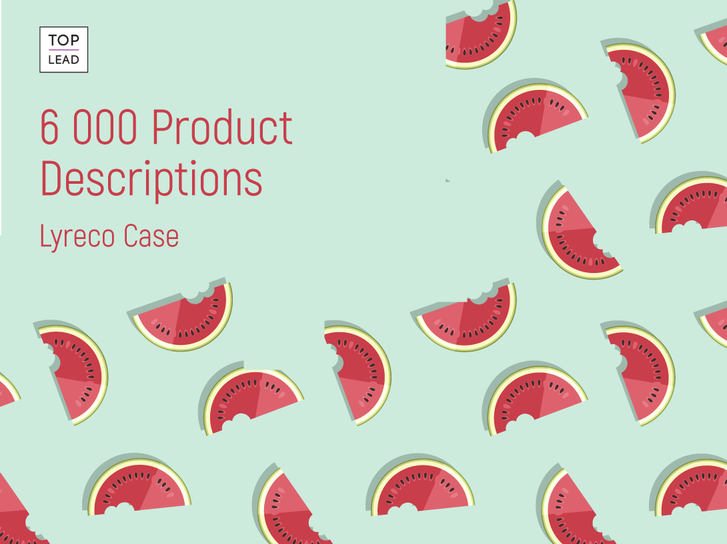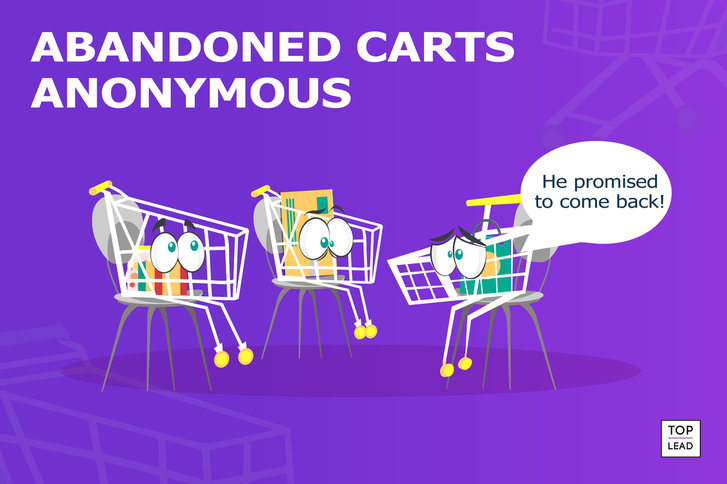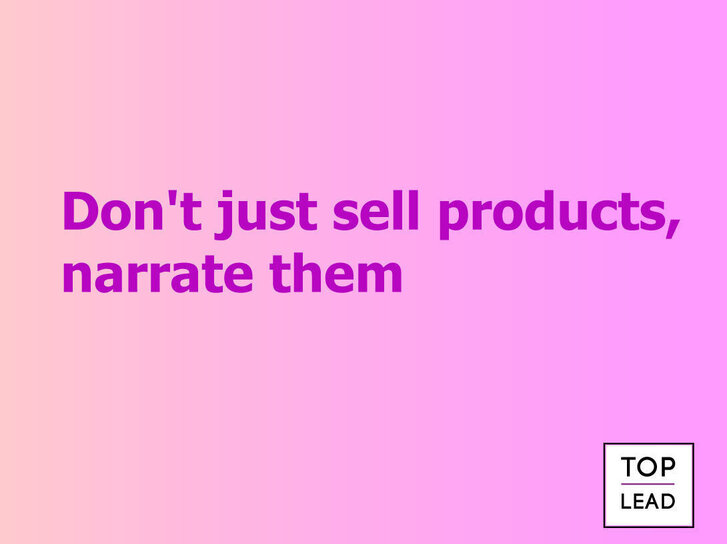3 Tips to Conquer Amazon: A Guide for Online Entrepreneurs
George Rowlands, Marketing Journalist
The first thing to know is that building a brand behemoth doesn"t happen overnight. Jeff Bezos is a very rich man, but he wasn"t born so. Bezos was born in Albuquerque, New Mexico, in 1964. Over the course of his career, he has taken a simple online book retailer run out of his garage to the dizzy heights of only the second company to be rated at a trillion dollars on the US stock market. Now, Amazon shifts an unbelievable 608 million parcels every single year and Bezos has an estimated net worth of an enormous $125 billion. That makes him the richest man in the world… ever.
It all got me wondering. Bezos" family must have a nightmare every birthday and Christmas trying to find something half decent that he hasn"t already got. So, naturally, I jumped on Amazon and after a few hours of browsing, I found the perfect gift for the man who has it all.
Yep it"s... nothing, and the fact that you can buy literally nothing on Amazon at least proves something. That is, that you can sell just about anything. If you want a slice of Jeff"s giant pie, you need to stand out on a super-saturated market. To do that, you need to pay critical attention to three aspects of your Amazon shop.
1. RESEARCH YOUR PRODUCT
Passion for your product is great — but if the masses don"t need it, they won"t buy it. Even further, Amazon has grown so much that simply slapping your private label on a product and expecting it to sell doesn"t work. Researching a product on Amazon is all about taking the time to analyse current market trends and eventually choosing a winning item.
If you"re old-fashioned, you might take a more manual approach. This can be done as simply as checking out the "Amazon Best Sellers" or taking a glance at the "Customers Also Bought" section. Alternatively, you can do a thing I like to call The 999 Trick. It"s a great way to get some real numbers on what you"re about to sell:
"After you"ve found the product you think you could sell on your page, you should find a similar product on Amazon with a best-seller ranking of 10,000 — 15,000 and put 999 of that product in your basket. The trick is that the seller won"t usually have that many of the product in stock, so Amazon will automatically default to the number of items in your basket to how many there are available. Keep these items in your cart for a few days and every time you go back to check on your basket you will be given a real-time update of how many your competitor has sold. Thus, giving you a pretty accurate idea of the demand for your product. "
If my dentist is reading this... I"m sorry
If you"re feeling lazy, there"s loads of automated software that ranges from free and basic like the official Amazon Seller App that can give you a recommended price for a product — to high-end, paid platforms like Unicorn Smasher Pro that give users a full dashboard of variations, prices, ranks, estimated sales and revenues, reviews, and other stats that are helpful to any budding Amazon entrepreneur.
The Unicorn Smasher extension for Chrome
There are literally hundreds of research platforms available, but they all do pretty similar things. A few honorable mentions go out to the ever-popular Jungle Scout, the curiously named camelcamelcamel, and the simple-yet-effective AMZScout.
Once you have made a solid decision on what you are going to sell, the next step is to research how you are going to sell it. You should know that most, if not all, of your competitors are using Search Engine Optimisation (SEO) and you most definitely should also use it to some extent.
"Amazon runs the A9 algorithm for its search results. It"s name isn"t important, but what it does and how you work with it could be the make or break of your Amazon shop. This algorithm pulls up the best results for any search based on the keyword that Amazon users have searched for. The number of hits on a product can significantly increase by adding just one of many search terms. SEO is basically the practise of finding these search terms and including them in your product listing."
Again, there"s a bunch of different software that you can use to find those magic words. My personal favourite is Google Keyword Planner, because… it"s free. It works by simply finding what other Google users are most likely to search for when they are looking for your product. For example, you might be selling a lovely pair of leather gloves in time for Winter. Using Keyword Planner, you might find that users are overwhelmingly searching for "warm leather gloves" and "real leather gloves". In turn, you can add these terms to your listing and bump up your search result relevance.
As my grandfather would say — "perfect planning prevents piss poor performance", and both of these first two steps fall well within the "preparation" category.
2. STAND OUT
So, the research has told you that your product is in high demand. Great. Unfortunately, it"s also told you that there"s a million and one brands out there with the same product, fighting for the same customers. It"s time to make your merchandise stick out like a beautiful sore thumb.
The most effective way to help your product stand out is by undercutting your competition who have similar products. Of course, nothing gets shoppers more hot under the collar than a bargain. But, quite understandably, you"re pretty proud of your product and would never want to undersell yourself. So, the only thing left is to oversell yourself.
I"m talking about the listing itself. When an Amazon product just isn"t banging like it should it"s often because the title, pictures, bullet points, and description haven"t found the right balance between SEO and seductivity. Let"s take it from the top.
The Title
The title is important because it is the very first thing a customer sees whilst they"re browsing. There"s a strict formula of official Amazon rules and other unofficial guidelines to follow. For maximum bang the title should include the brand name, colour and/or flavour (or another variant on this theme), size and quantity, and any cheeky SEO keywords you can squeeze into the 200 character limit.
One thing to note is that as of June 2019, Amazon have a rule whereby your product simply won"t appear in customer search results if they are jam packed with SEO keywords. So, title content needs to be complete and to a high standard.
The Pictures
Ecommerce is all about visualisation; Amazon is no different. The quality of a brand"s pictures has a direct correlation to their success on Amazon. Think of it like a huge game of shopping Tinder, where if your picture is not alluring enough to a user (customer), they can simply move onto the next hunk in a tank top (product) with a tap. Your primary picture needs to make an instant impression by being clear and uncluttered. Despite the temptation, it mustn"t be misleading — this can create more problems than it solves in the long run.
Ingredients and benefits organised into two simple infographics
After the primary picture is sorted, there is a little more creative freedom for the rest of your gallery. Infographics are a great way to squeeze even more specifications or to highlight a particularly wonderful feature in your listings. Amazon is even testing the waters with a few interactive features. But, even with this possibility for customisation — there is, of course, a code of conduct to follow before your gallery gets accepted.
The Bullet Points and Description
If Amazon is your shop, then your copy is your salesperson. The product descriptions on Amazon are split into two separate sections — "bullet points" and "description". The description section is limited to 2000 characters, but you can set it out however you want. There are a maximum of five bullet points with up to 500 characters in each. Customers naturally read the bullet points first because they are placed higher up on the page.
Balanced bullet points with original content and SEO keywords
Five bullet points might not sound like a lot, but this part of your listing is designed to give customers quick, easily-digestible flashes of information about a product. Present this section of your listing like a top-5 list of the best features, with the most flauntable feature at the top. The most important thing to remember here is that you are writing for a customer — a knotted tangle of SEO content gets views on your page, but your brand looks unprofessional and customers" thirst for knowledge isn"t quenched. Keep it concise but punchy, and use lots of positive, colourful adjectives. Finally, always try to state the benefits of a feature, rather than just the feature itself.
Good and Bad bullet points
A good product description should take a customer through every step of using a product like a good infomercial does. The first 200 characters should be dedicated to getting a customer on the line, whilst the rest of the 1800 should reel them in with real content. Describe every aspect of the product that you haven"t already described in the bullet points, and avoid lazily duplicating them. Include obvious, and not-so-obvious, product uses. The description is a little more out of the spotlight than the bullet points, and so there is a little more creative freedom to squeeze in a few more SEO keywords.
A clever mix of HTML, real-use cases, and SEO keywords.
You can even use some HTML coding to present information more clearly. Even better, there are tools such as sellerapp that will do it for you. Of course, I would suggest creating a story around your product for more personality in your listing. Like everything else, there"s an official code of conduct to follow when you are writing your description. More than anything, know your customer and understand what they want; this is the third port of call for them; they"ve made it this far, don"t lose them now.
3. EARN YOUR STARS
It"s been a couple of months, and you should have at least sold something by now. Well done. Time to kick back and relax, right? Wrong. If anything, the hard work starts here. You need to maintain the good relationship you have built with your customers to increase brand loyalty and increase recommendations. Customer service is unequivocally important if you want your Amazon business to sustain steady growth.
Stay in touch with your customers by responding to enquiries and negative reviews. It"s important to remember that no matter how much you think a customer might be wrong, you will never win the argument. So, be polite and remember the manners that your mother taught you. If a customer is fuming hard, it"s worth more of your money and time to simply offer them a refund than for them to leave a negative review.
Of course an Amazon user is not legally entitled to leave a review, no matter how happy they are. To earn your stars, you might need to be a little bit persistent with a cleverly crafted email campaign.
The first email
Send a courtesy email immediately after purchase. Let your customer know that their order is being packed and shipped in the next few days. Tell them that you are there for them should they have any questions. Talk your product up so a customer knows what to leave in their positive review, which you will remind them to leave at the end of the message.
The second email
The second email should be sent no more than two days after you expect the product to have been delivered. This is a simple review prompt, politely asking customers to leave their thoughts on your page whilst it is still fresh in their mind. Honesty is a good policy here, and telling your customer why a review is so important to your brand is a good tactic to get fingers on keyboards.
The third email
This is the last shot to get your customer to leave a review before they forget you… forever. It should, again, be a review prompt and should be as equally polite as the previous two emails. In this email, you can suggest some themes for what a customer can review in case they have writer"s block.
Amazon users are paying for your product and their feedback is as genuine as it comes. Over time as more products are sold, your reviews will become a more and more honest reflection of your brand in the marketplace. You can, of course, cheat and buy reviews from a talented copywriter — but Amazon has recently cracked down on this malpractice by introducing a "buyer verified" icon.
With Amazon, we are blessed to have a ready-made shopfront that is conveniently always open. It"s so comfortable, you could run a business in your underwear if you wanted to. No matter how you decide to stock your business -through manufacturing or private labelling -the three pillars of a successful Amazon business remain the same.
Research is an absolutely crucial foundation upon which to build your business; to be over-prepared is better than to be under-prepared. The tantalizing copy on your page is the shop window, where hundreds of customers could be peering in at any one time. Finally, how you interact with customers is equally, if not more, important than the qua lity of your product.
Become the entrepreneur you have always dreamt of becoming.






